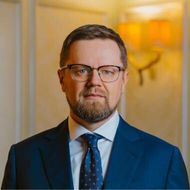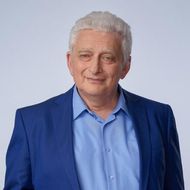MIEM HSE Establishes Telecommunications Research Institute

The institute will conduct fundamental and applied research in the development, analysis, and application of communication technologies with their subsequent commercialisation, as well as train R&D engineers for the telecom industry. Professor Evgeny Koucheryavy, the newly appointed Director of the MIEM Telecommunications Research Institute, has spoken to the HSE News Service about the goals, objectives, strategy and structure of the new organisation.

Evgeny Koucheryavy
Current Challenges in the Telecom Industry
The telecommunications field has changed radically in recent decades. Today, we face complex tasks in ensuring communication not only among people, but also between devices and systems that are not directly controlled by humans. This includes complex technologies such as autonomous robotic systems and platforms for land, air, underwater and space application. Communication today is a much broader concept than it was even a decade ago, and it brings together various fields of knowledge and practice, including, for example, artificial intelligence (AI) and its trusted models.
The importance of the telecommunications industry as a whole has increased significantly, both for business and for the state. Today, scientific organisations have an opportunity to offer their research and development (R&D) results to the industry so that they can be incorporated and integrated into products that operate at communication networks in Russia and abroad.
Planned Research Activity and the Commercial Component
In our case, these commercial products will comprise technologies formalised in the form of licenses, patents, know-how, and other types intellectual property, as well as various prototypes and demos that an industrial partner can develop for mass production.
Even by now, the institute's staff has laid considerable groundwork, because telecom technologies are one of the mainstream educational areas at MIEM. We possess highly qualified researchers and scientists in this field, as well laboratories that deal with broad telecommunications tasks. We are currently working to consolidate expertise and research work within the telecom field, building proper interaction between the existing laboratories and research groups.
Ultimately, this will help us strengthen commercial offers for various industrial sectors, including the telecommunications industry, and the state. Proper formation of a proprietary and relevant offer is a strategic goal of the Institute. Another research area concerns requests from the real sector of the economy. It is quite difficult and expensive for many companies engaged in the development of mobile communications to solve knowledge-intensive tasks on their own. It is often economically and organisationally expedient to delegate these tasks to a university. Today, our partners include leading telecom companies (YADRO, T2), as well as a number of companies working in such areas as the Internet of Things and the Industrial Internet of Things.
Next-Generation Communication as a Strategic Area of Research
The media is now hyping around sixth-generation networks, 6G, since there are no standards yet—only a general understanding of the main characteristics and key scenarios for using networks of this generation. At the 3GPP meeting in March 2024 in Maastricht (the Netherlands), a 6G standardisation schedule was approved. The first release of the 6G set of standards, so-called Release, is expected by the end of 2028 or early 2029. The approved schedule provides for the start of commercial deployment of 6G networks in 2030. Therefore, 6G components developed in accordance with 3GPP standards will not be tested until 2027 at the earliest.
For 6G networks, the development of new electronic components is the most important task, especially when implementing high-frequency radio interfaces that were not used in previous generations of mobile communications. When the components are developed to a certain level, the developers proceed to solving problems related to ensuring the interaction of components with each other and building a communication system. Our institute has already been actively involved in the development of electronic components and layouts in the field of 6G.

Training of Development Engineers and a New Master's Programme
Software engineers trained under existing educational patterns solve tasks in a relatively narrow framework from the point of view of companies developing communication systems. Basically, this involves the software implementation of previously developed protocols and algorithms, but we lack developers who can create these protocols and algorithms, understand what a communication system is, and then issue tasks to programmers. Their training is the most important area of the Institute’s activity. In the next academic year, we will launch a master's programme that will train developers specifically for the telecom industry in the interests of domestic manufacturers of the relevant equipment.
We have established the research institute inside an educational institution. Therefore, the staff of the institute includes not only scientists and researchers, but also students, whom we involve in project work and practical and research tasks, while laboratories and workshops will become part of the educational process. Doctoral students will be engaged in scientific and practical developments, teaching students, and solving research problems.

Academic Supervisor of the Institute
‘The world of modern technologies—the world of cyberphysical systems—is entirely based on the availability of stable communication. Therefore, the unification of a wide range of areas at MIEM, representing the telecommunications field in one way or another, is an inevitable and necessary stage in the development of the institute as an advanced centre of digital technologies. The existing research potential of MIEM, its scientists, laboratories, and students is the foundation that allows us to contribute to solving the most important scientific tasks facing the telecom industry in Russia today.’

